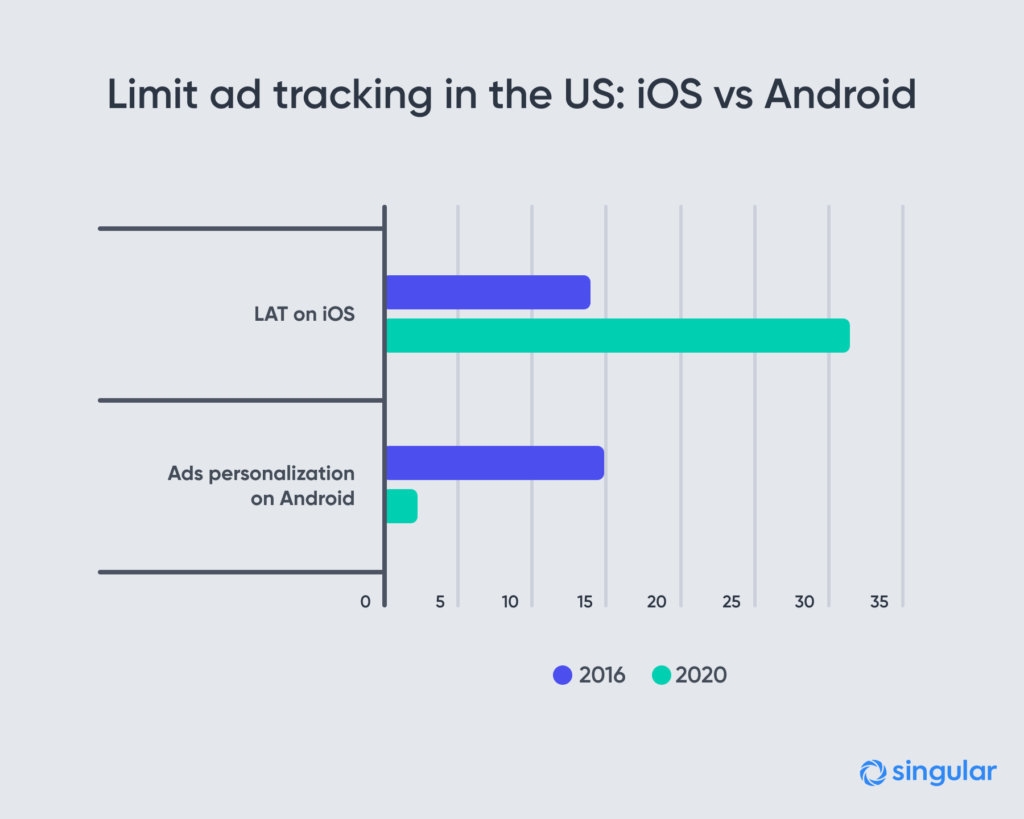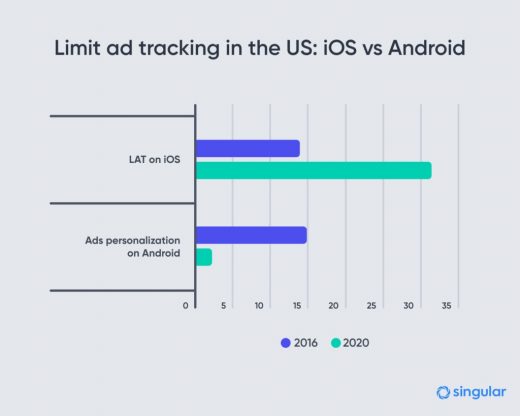Moving On Without Apple’s Identifier For Advertisers On Apple Devices
Moving On Without Apple’s Identifier For Advertisers On Apple Devices
On June 23 at the Worldwide Developers Conference, Apple announced changes to its IDFA, or Identifier for Advertisers on Apple devices, that help advertisers target and track users in apps on devices running iOS.
Although Apple didn’t fully eliminate the feature, as some feared, it did change the default setting for IDFA sharing from automatic to user opt-in. Every app publisher must now ask users to enable IDFA sharing — via an ominous prompt that warns of tracking “across apps and websites owned by other companies” and offers the choice to either “Allow Tracking” or “Ask App Not to Track.”

Mobile advertisers that rely on IDFA are not confident that users will take the option to opt-in, especially as concerns around data sharing and privacy loom large.
Today, about 30% of iOS users in the U.S. have opted out of sharing IDFA information by manually enabling “Limit Ad Tracking,” an option tucked away behind several pages of iOS settings. With Apple’s changes, many expect the number of opt-outs will grow to 80% or 90%.
Brands that see IDFA as the backbone of their advertising programs have voiced concerns about how these changes may limit their ability to target and suppress advertisements to users across apps.
Who is (and isn’t) impacted?
It’s no surprise there are sweaty palms in the $80 billion mobile advertising industry. But let’s take a moment to consider who is impacted and who is not.
The biggest casualty of Apple’s changes to IDFA are app publishers that rely on advertising to generate revenue. IDFA plays a critical role in attributing ad conversion to specific users, which enables publishers to demonstrate the success of an ad to the advertiser that purchased it.
Without IDFA, publishers are flying blind — and advertisers would have to spend money without any clear understanding of their return on ad spend.
The other affected party is advertisers — usually brands that buy ads across mobile and web platforms.
To be clear, changes to IDFA will have no impact for brands looking to better understand user behaviors and deliver personalized experiences within their own app. The benefit IDFA provides is the ability to track users’ app and web activities across different apps. But customers within the walls of a brand’s app will already have unique identifiers that can be used to track in-app activity and deliver personalized content.
Instead, it is advertisers looking to acquire new customers and suppress existing customers through ads delivered across the app ecosystem that are affected by Apple’s changes to IDFA. With the new user opt-in requirements, advertisers lose the key to their existing acquisition and growth strategy.
What is the path forward?
For advertisers, there are proven alternatives to keep ad programs productive and cost-effective.
Advertise in known channels
Many consumers that brands target through IDFA will be associated with other user-specific identifiers, such as email addresses and phone numbers. As a first measure, evaluate what your strongest identifiers are outside of IDFA and consider shifting investments to channels that will target using those IDs.
Often, those identifiers can be shared with various platforms, such as Facebook, Google, Twitter and Instagram, and used to run cross-platform ad campaigns and suppressions.
Of course, volumes will be lower overall — one of our clients has email addresses for about 65% of their IDFA audience, which can support retargeting on other known platforms — but acquisition and growth are still very viable with those identifiers.
Upgrade your mobile addressability
With the end of third-party cookies and changes to IDFA looming, identifiers for inventory across paid channels are becoming an endangered species.
Apple’s decision is not a surprise to anyone who has been following the mobile advertising industry, and some advertisers have prepared for this by investing in alternatives to IDFA for audience addressability. These brands have started to take advantage of solutions that provide effective, privacy-centric mobile addressability without IDFA — solutions that combine machine-learning with identity graphs to build robust profiles of unknown customers.
With these solutions, marketers are able to dramatically improve their paid-advertising efforts across mobile, web and social platforms by improving the accuracy of audience targeting and measurement. Ultimately, marketing and advertising spend will shift away from completely anonymous channels to known first-party channels, as privacy and consent become more prevalent across all consumer touchpoints.
(46)


